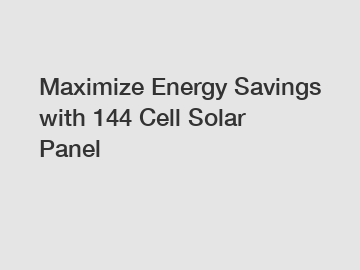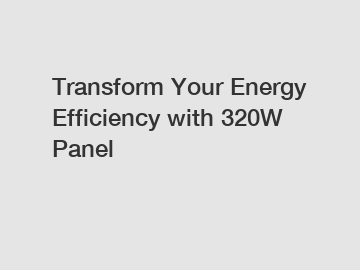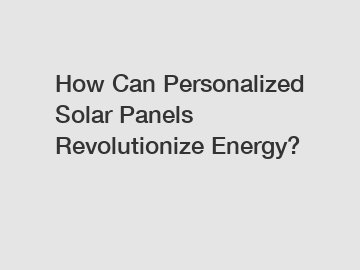The Ultimate Guide to Choosing Vertical Axis Wind Turbine
How to Choose Between Horizontal and Vertical Axis Wind Turbines.
Harnessing the power of the wind to generate clean, renewable energy for your home is not only a sustainable and eco-conscious choice, but one that will most likely help lower your electricity bill. Yet, as you embark on the journey to explore residential wind turbines, an important decision awaits you: should you opt for a horizontal axis wind turbine (HAWT) or a vertical axis wind turbine (VAWT)? It may sound complicated at first glance, but do not worry. In this comprehensive guide, we’ll dive into the nuances of both options, provide descriptions, pros and cons, and highlight critical considerations to help you make an informed choice for your home. Let’s breeze right into it!
Link to Qianyun
Horizontal Axis Wind Turbines (HAWTs)
HAWTs have proven their reliability in various settings and landscapes, making them a trusted choice for those looking to harness the wind’s power for a greener future.
Pros:
- High Efficiency: HAWTs are renowned for their remarkable energy conversion efficiency, making them an attractive choice for maximizing power generation. In fact, the rated power output potential with these turbines is far greater than what VAWTs could produce.
- Consistent Performance: These turbines thrive across a wide spectrum of wind conditions, making them adaptable to various geographic locations.
- Proven Technology: HAWTs have a strong track record, commonly used in commercial wind farms and benefiting from years of technological advancements.
- Quiet Operation: Typically, HAWTs operate with minimal noise levels. This ensures a peaceful environment, which makes them great solutions for residential use.
Cons:
- Space Requirement: Depending on your power needs, HAWTs may demand a substantial amount of space. This can definitely be a limiting factor for homeowners with smaller properties.
- Visual Impact: The size and height of HAWTs can impact the aesthetics of your property, potentially affecting the views and preferences of your neighbourhood. It is always recommended to validate if your city or district has rules and regulations regarding the matter in place.
- Installation and Maintenance: Due to their size and complexity, the installation and maintenance of HAWTs may require greater investment in terms of both time and cost. Once again, this will often be dictated by the size of the wind turbines. Since they do come in different sizes, smaller models should be much simpler to install. In either case, our recommendation is to always consult an expert in case.
Vertical Axis Wind Turbines (VAWTs)
In addition, due to their shape, vertical axis wind turbines offer a space-saving, compact design that’s well-suited for residential settings. This feature also helps them generate electricity at lower wind speeds. Finally, VAWTs are known for their reliability and ease of installation and maintenance. This certainly makes them an appealing choice for homeowners looking to embrace clean, renewable energy.
Pros:
- Compact Design: VAWTs are tailor-made for smaller spaces. This feature makes these wind turbines a perfect energy solution for homeowners with limited space. As long as there’s wind of course.
- Omnidirectional Wind Capture: These turbines excel at capturing wind from any direction, eliminating the need for sophisticated wind tracking systems.
- Low Wind Speed Performance: VAWTs definitely have an edge over its horizontal counterpart in areas with inconsistent wind patterns. This is due to the rotor being on the vertical axis. Not only does it allow the blades to capture winds coming from all direction, but its efficiency at generating electricity at lower wind speeds is unmatched.
- Easier Installation: With their compact design and reduced height, VAWTs are easier to install and maintain, making them budget-friendly options for many homeowners. That being said, we can never repeat it enough. Unless you are an expert in the field, we always recommend dealing with an expert.
Cons:
- Efficiency: Yes, VAWTs may excel in lower-multidirectional winds, but when it comes to maximum output, we cannot say the same. VAWTs may not be the optimal choice in a setting with constant high-winds. In these conditions, HAWTs have shown to be more efficient with an average energy output greater then what vertical wind turbines could produce.
- Mechanical Complexity: Certain VAWT designs may incorporate more complex mechanical components, potentially increasing maintenance requirements. This is why it is important to do your due diligence before choosing your wind turbine equipment.
- Limited Scaling: Scaling up VAWTs for large-scale electricity production can be challenging, limiting their utility in commercial applications. Fantastic for residential use, not so much for commercial space.
Important Considerations
When it comes to choosing between vertical and horizontal wind turbines for your home, several vital factors should be considered:
- Space Availability: Evaluate the space available on your property. Smaller spaces may favor VAWTs, while larger properties might accommodate HAWTs.
- Wind Conditions: Analyze the average wind speeds in your area. HAWTs perform optimally in consistent high-wind areas, whereas VAWTs are more reliable in regions with variable or low wind speeds.
- Potential Rated Power Output: When shopping for a residential wind turbine, it is important to pay attention to the rated power of the wind turbine generator. This is usually calculated in kW or MW and it represents the maximum electrical power output that a residential wind turbine can produce.
- Aesthetics: Take into account the visual impact on your property and the views of your neighborhood. VAWTs typically have a lower profile and are less imposing.
- Budget: Consider your budget for both installation and maintenance. VAWTs are generally more cost-effective in these aspects, making them a practical choice for budget-conscious homeowners.
- Installation and Maintenance: The complexity of installation and maintenance should play a pivotal role in your decision-making process. Determine whether you are prepared for a DIY approach or if professional assistance is required.
Below is a table summarizing the key differences between HAWTs and VAWTs:
Conclusion
Choosing the right wind turbine for your home is a decision that should be made with careful consideration of your unique circumstances, including available space, local wind conditions, aesthetic preferences, and budget. Each option offers its own set of advantages and disadvantages, so it’s essential to evaluate which wind turbine aligns best with your sustainability goals and practical needs. With the right choice, you can harness the power of the wind and contribute to a greener, more sustainable future right from the comfort of your home.
Side note! Wind turbines can always be used in combination with solar panels if one was looking to optimize the amount of renewable energy generated (and the savings!). If you are curious about solar energy, how it works I invite you to start here:
If you have any questions about the information provided, please feel free to share in the comments section or in our Reddit group (r/Greenrhub).
Difference Between Horizontal and Vertical Axis Wind Turbines
Wind turbines play an important role in producing renewable energy by efficiently turning wind into electricity. They come in two main types: Horizontal Axis Wind Turbines, or HAWTs, and Vertical Axis Wind Turbines, otherwise known as VAWTs. Knowledge of their differences can aid in making the best decision for varied energy needs and locations. This blog explains the difference between the two types, along with their advantages and typical uses. So, let’s begin.
What Are Horizontal Axis Wind Turbines (HAWTs)?
Structure and Working Mechanism of HAWTs
Horizontal Axis Wind Turbines (HAWTs) are the most common type of wind turbines. They have large blades on a horizontal shaft at the top of a tall tower. Inside the tower, in the nacelle section, are essential parts like the generator and gearbox. The blades face the wind, spinning the rotor, which helps generate electricity through the gearbox. These turbines are designed to work well in places with a lot of wind and have blades that capture as much energy as possible.
Advantages of Horizontal Axis Wind Turbines
HAWTs are very efficient and thus are perfect for large-scale energy production. Their design and technology make them more suitable for locations where winds are strong and constant. Here are the key benefits of HAWTs.
- These turbines excel in areas with consistent, strong winds, making them ideal for large-scale energy production.
- HAWTs can generate significant electricity with fewer turbines than other designs.
- Their established technology allows for streamlined integration into utility grids, and they are particularly effective in offshore environments where wind speeds are consistently high.
- Additionally, HAWTs have advanced aerodynamics, ensuring maximum energy conversion.
Common Uses of HAWTs
HAWTs dominate large-scale wind farms and are common in onshore and offshore installations. Some applications include –
- Offshore horizontal axis wind turbines are especially valuable, as they can take advantage of open ocean spaces and higher wind speeds.
- They are often used in large-scale renewable energy projects to power entire cities or industrial operations.
- The capacity to handle substantial energy loads makes them the backbone of many national grids.
What Are Vertical Axis Wind Turbines (VAWTs)?
Structure and Working Mechanism of VAWTs
Vertical axis wind turbines (VAWTs) are designed differently from the common horizontal axis turbines. Their main rotor shaft stands vertically, letting the blades spin around it. This setup lets VAWTs capture wind from all directions without pivoting towards the wind. They are generally not as tall as HAWTs and have a simpler structure, with the generator often placed at the base, making them easier to maintain. This design makes VAWTs particularly suitable for varied environments where wind direction changes frequently.
See also:Is BIPV the best choice for solar power? - Gain Solar
Lithium Batteries
120 Half Cell Solar Panel Kits Factory
Are Large Format 72 Cell Solar Panels Worth the Investment?
Top Custom Solar Panel Flood Light Manufacturers
Advantages of Vertical Axis Wind Turbines
Vertical-axis wind turbines have various benefits that make them a preferable choice for certain scenarios and deployments.
- VAWTs are not as noisy as HAWTs; therefore, they suit the urban and residential type of environments.
- They are also easier to install and maintain because their components lie close to the ground.
- In addition, their functionality in areas with unpredictable wind patterns is increased by the ability to capture wind from any direction.
- These turbines are best for small-scale energy projects where space is limited, or noise pollution needs to be minimised.
Common Uses of VAWTs
Vertical-axis wind turbines are common in urban environments, residential properties, and small-scale installations.
- They are used to power individual homes, small businesses, and even streetlights.
- Their compact size and reduced noise levels make them ideal for city applications where traditional wind turbines might not fit.
- VAWTs are also used in experimental setups and niche markets where adaptability and ease of installation are priorities.
Key Differences Between Horizontal and Vertical Axis Wind Turbines
Efficiency and Performance
Efficiency is one of the major differences between HAWT and VAWT. Horizontal axis wind turbines (HAWTs) are more effective in transforming wind energy into electrical energy due to their efficiency and ability to harness strong and constant winds. Vertical axis turbines (VAWTs), however, are more effective in locations with fluctuating wind speeds since they can catch wind from all angles. HAWTs are most effective in generating a lot of power and are suitable for large wind farms. VAWTs, on the other hand, are suitable for small schemes with little space or wind resources that are more uncertain.
Cost and Installation
The cost of installing horizontal and vertical-axis wind turbines can differ a lot. Horizontal axis turbines (HAWTs) are more expensive initially because of their taller towers, complex design, and advanced materials. However, they still generate better results over a longer period, especially for big work. VAWTs are also cheaper to set up and maintain and, therefore, suitable for individuals with constrained funds. VAWTs are also easier to install since they don’t need as much height or space, which makes them suitable for areas with limited space or resources.
Maintenance and Durability
Maintenance is another critical difference. HAWTs require regular upkeep, including inspections of the nacelle, blades, and gearbox located at significant heights, which can make repairs challenging and costly. On the other hand, VAWTs have fewer parts and better accessibility to the components, thus making them easier to maintain. However, due to the fact that VAWTs have blades, these blades are prone to get damaged easily due to turbulence and thus have a shorter life span.
Which Wind Turbine Is Right for You?
Best Applications for Horizontal Axis Wind Turbines
Horizontal-axis turbines and vertical-axis turbines vary significantly in terms of efficiency. HAWTs convert more wind into energy more efficiently because of the latest design and ability to trap strong, steady winds. In areas with unpredictable wind flows, VAWTs do much better since they capture the wind from any direction. HAWTs are the best for generating large amounts of power and are, therefore, suited for large wind farms. VAWTs are suitable for small applications in which space is limited, or winds are less predictable.
Best Applications for Vertical Axis Wind Turbines
VAWTs are ideal for small and residential applications. For someone located in an urban setting or at a place where wind flows are not regular, VAWTs provide an effective solution. They are more suitable for homes, businesses, and communities where the production of renewable energy is needed without disturbing the environment within the immediate locality. VAWTs are less noisy and compact and, hence, suitable for those applications that consider aesthetic appeal and minimal disturbance.
Conclusion
Both horizontal and vertical axis wind turbines are important for renewable energy but are suitable for different situations. As highlighted above, Horizontal axis turbines (HAWTs) are very efficient and great for large-scale energy production in windy, open areas. Vertical axis turbines (VAWTs) are better for smaller setups and can work well in urban or low-wind areas because they are easier to install and can handle wind from any direction. Choosing between these depends on your specific needs, including your budget, the wind conditions in your area, and how much energy you need.
Frequently Asked Questions
What is a wind turbine?
A device that converts the wind’s kinetic energy into electrical energy.
How do Horizontal Axis Wind Turbines work?
By aligning with the wind to rotate a shaft connected to a generator.
How do Vertical Axis Wind Turbines work?
They capture wind from any direction to turn a vertically aligned rotor shaft.
What are the uses of Horizontal and Vertical Axis Wind Turbines?
HAWTs are mostly used in large wind farms; VAWTs are suitable for urban or residential areas.
What is renewable energy?
Energy from sources that are not depleted when used, such as wind or sun.
5 Must-Have Features in a TOPCon PV Module
Wholesale Solar Panels: Affordable Bulk Buying Options Explained
Why Should Homeowners Consider Wholesale Solar Panels?
5 Reasons Why Your Business Needs solar shingle manufacturers?
Maximize Energy Savings with a Balcony Solar System Today
Is BIPV Worth the Investment for Homeowners?
Discover the Ultimate Guide to 290w Solar Panels - Answers to Your Burning Questions!









